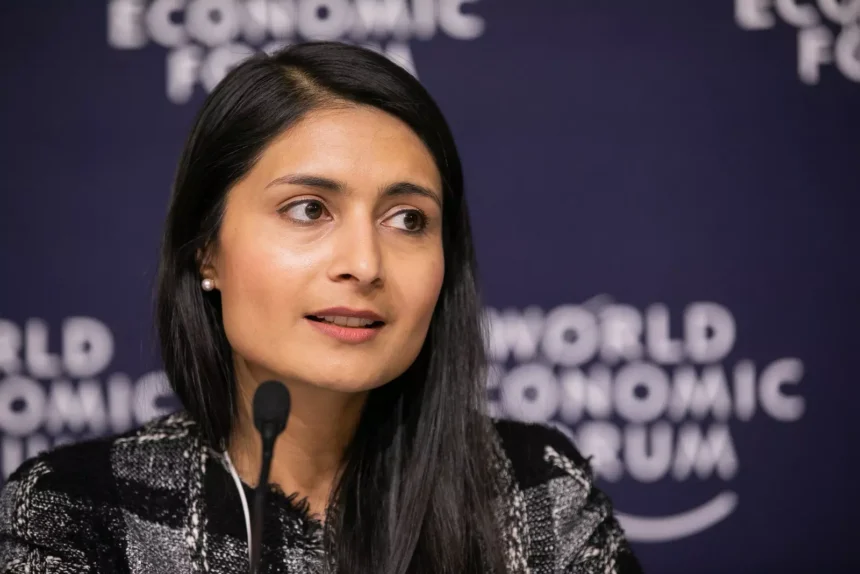Sub-Saharan Africa ranks sixth in terms of the global gender gap, with a current score of 68% according to the World Economic Forum (WEF). In its latest Global Gender Gap Report 2025, released this week, the WEF notes Sub-Saharan Africa displays wide variation across countries, but its success stories demonstrate that progress is possible in all economic contexts.
“The region has made significant progress in political empowerment, with women now holding 40.2% of ministerial roles and 37.7% of parliamentary seats,” the WEF stated.
The Global Gender Gap Report is in its 19th edition and benchmarks gender-based gaps in economic participation, educational attainment, health and survival, and political empowerment. As the longest-standing index tracking progress since 2006, it provides a comprehensive analysis of developments in 148 economies representing over two-thirds of the world’s population.
The latest results show the global gender gap has closed to 68.8%, marking the strongest annual advancement since Covid-19. However, full parity remains 123 years away at current rates, according to the WEF report that indicates Iceland leads the rankings for the 16th year running, followed by Finland, Norway, the United Kingdom and New Zealand.
The report, which covers 148 economies, reveals both encouraging momentum and persistent structural barriers facing women worldwide. The progress made in this edition was driven primarily by significant strides in political empowerment and economic participation, while educational attainment and health and survival maintained near-parity levels above 95%. However, despite women representing 41.2% of the global workforce, a stark leadership gap persists with women holding only 28.8% of top leadership positions.
“At a time of heightened global economic uncertainty and a low growth outlook combined with technological and demographic change, advancing gender parity represents a key force for economic renewal,” said Saadia Zahidi, managing director of the World Economic Forum. “The evidence is clear. Economies that have made decisive progress towards parity are positioning themselves for stronger, more innovative and more resilient economic progress.”
The index looks only at gender gaps in outcomes and not at the overall levels of resources and opportunities in a country. It finds a slight correlation between the current income levels of the countries covered and their gender gaps, with richer economies being slightly more gender equal. At the aggregate level, high-income economies have closed 74.3% of their gender gap – slightly higher than the averages observed in lower-income groups: 69.6% among upper-middle income, 66.0% among lower-middle-income and 66.4% among low-income economies.
Yet, the correlation is low and does not indicate causation. Top performers among the three lower-income groups have closed a greater share of their gender gaps than over half of the economies in the high-income group. While resources matter, it is not richer countries alone that can afford to invest in gender parity – economies can integrate parity into their growth strategies at all levels of development.
Historically, those who have done well at developing and integrating their full human capital tend to have more sustainable and prosperous economies as a result. Leveraging the full base of talent and diverse ideas in an economy can unlock creativity and drive innovation, growth and productivity.
On the regional front, North America leads the world with a gender parity score of 75.8%, showing particularly strong performance in economic participation and opportunity (76.1%) where it leads all regions. Europe ranks second, while the Middle East and Northern Africa rank eighth with a score of 61.7%. However, the region has shown considerable improvement in political empowerment since 2006, with the regional average more than tripling and gaining 8.3 percentage points in this dimension. The WEF pointed out that the fastest-moving economies demonstrate that rapid acceleration is possible when gender parity becomes a national priority. The economies that proved most successful at bridging their gender gaps across each income group respectively are Saudi Arabia, Mexico, Ecuador, Bangladesh and Ethiopia.
Moreover, women in lower- and middle-income economies in particular moved into formal and better remunerated employment in export sectors in recent years. These roles could be at risk in the face of potential trade contractions.
“As evidenced by the Covid-19 emergency, while both men and women suffer under trade shocks, effects for women tend to last longer and are harder to reverse, exacerbating pre-existing disparities in earnings, assets and wealth. It will therefore be important to keep the gendered job and wage impacts of trade fragmentation and its effects on growth and prosperity at the forefront as trade policy evolves in 2025,” the WEF stated.
“Women’s progress in leadership continues to decline. As the global economy transforms, AI accelerates, and countries look to combat stagnating growth, this leadership gap should set alarm bells ringing,” said Sue Duke, Global Head of Public Policy at LinkedIn. “The varied experience and uniquely human skills that women bring to the leadership table are essential to unlocking the full promise of an AI-powered economy, yet are being overlooked at exactly the moment they are needed most.”


